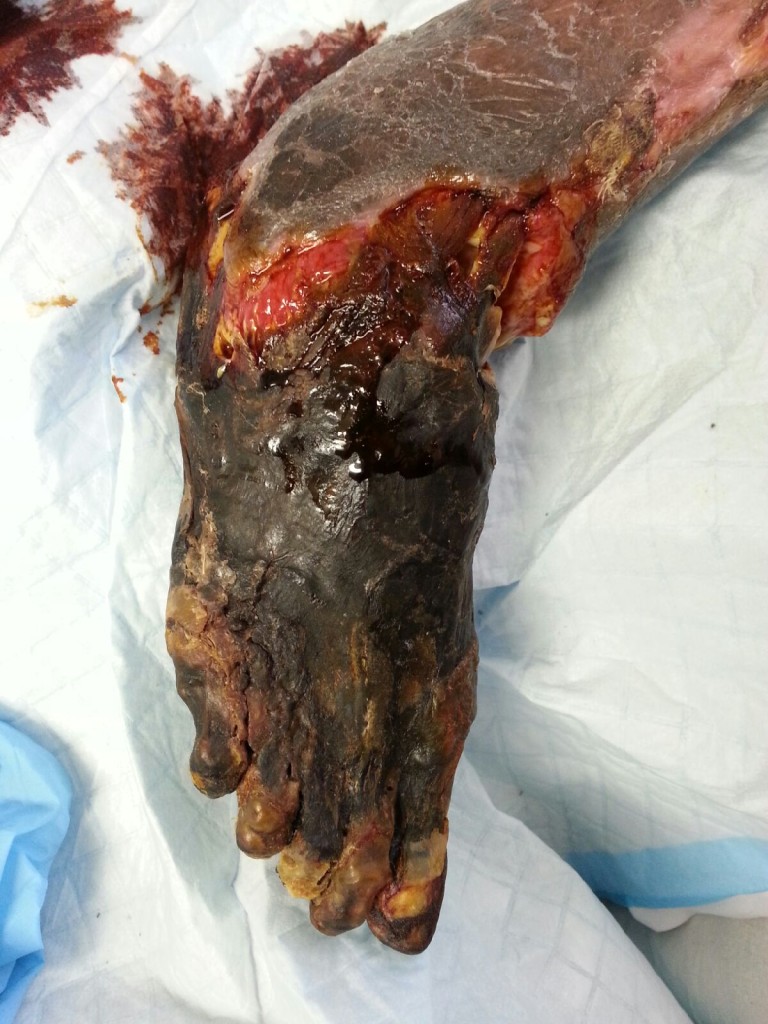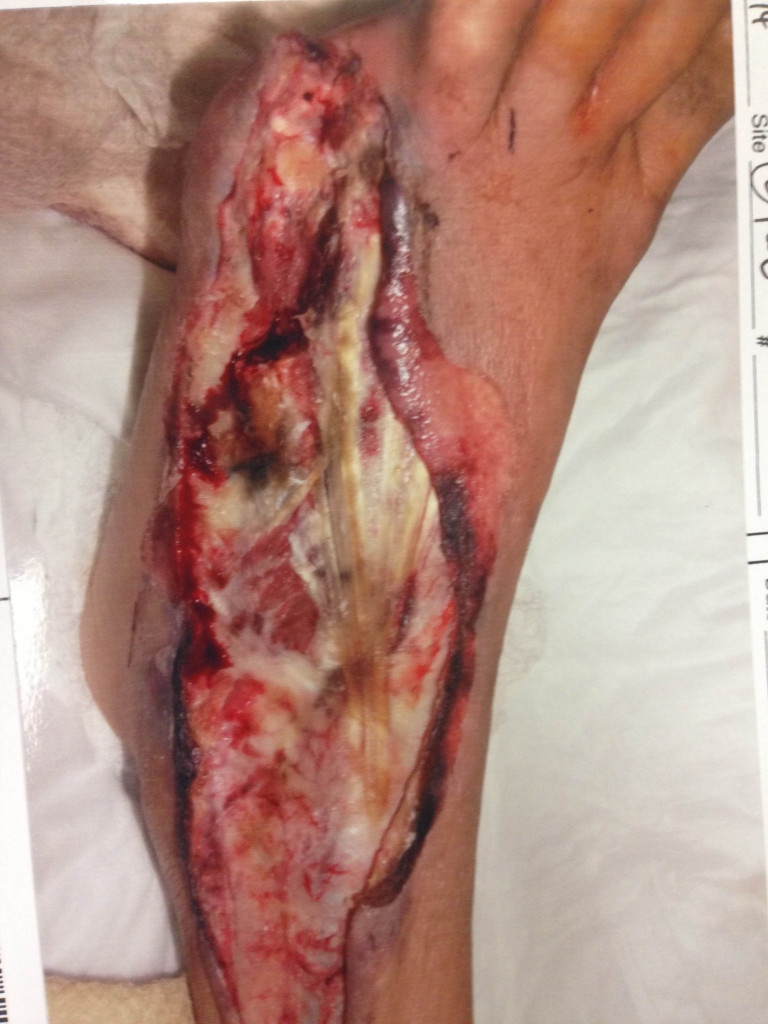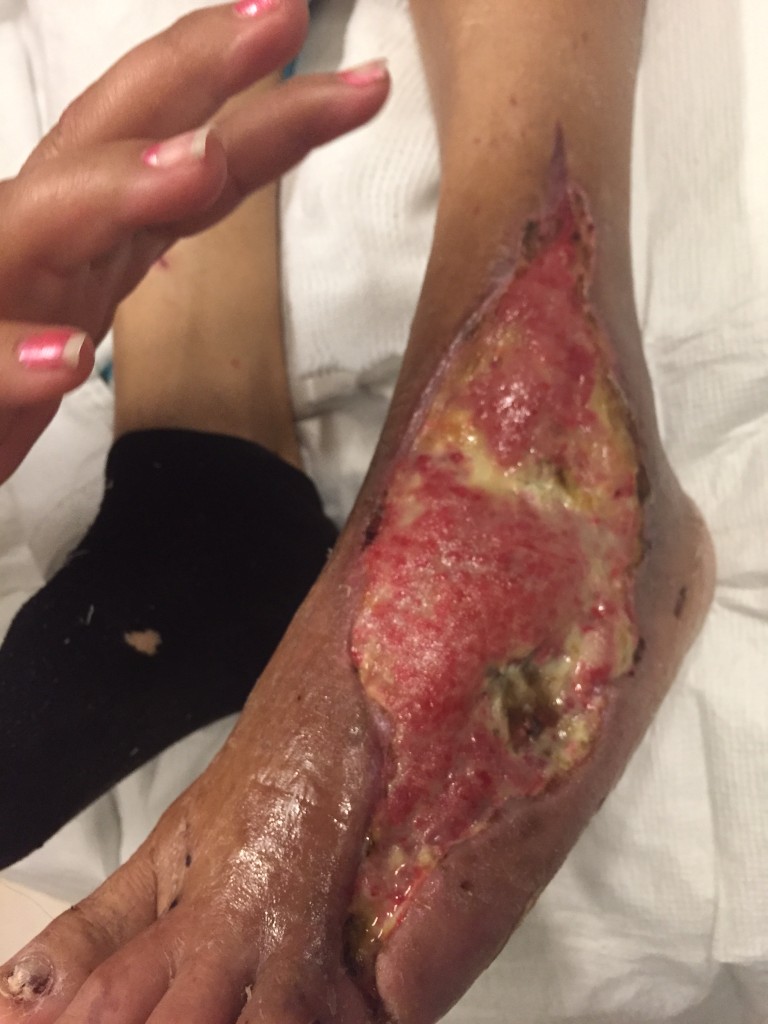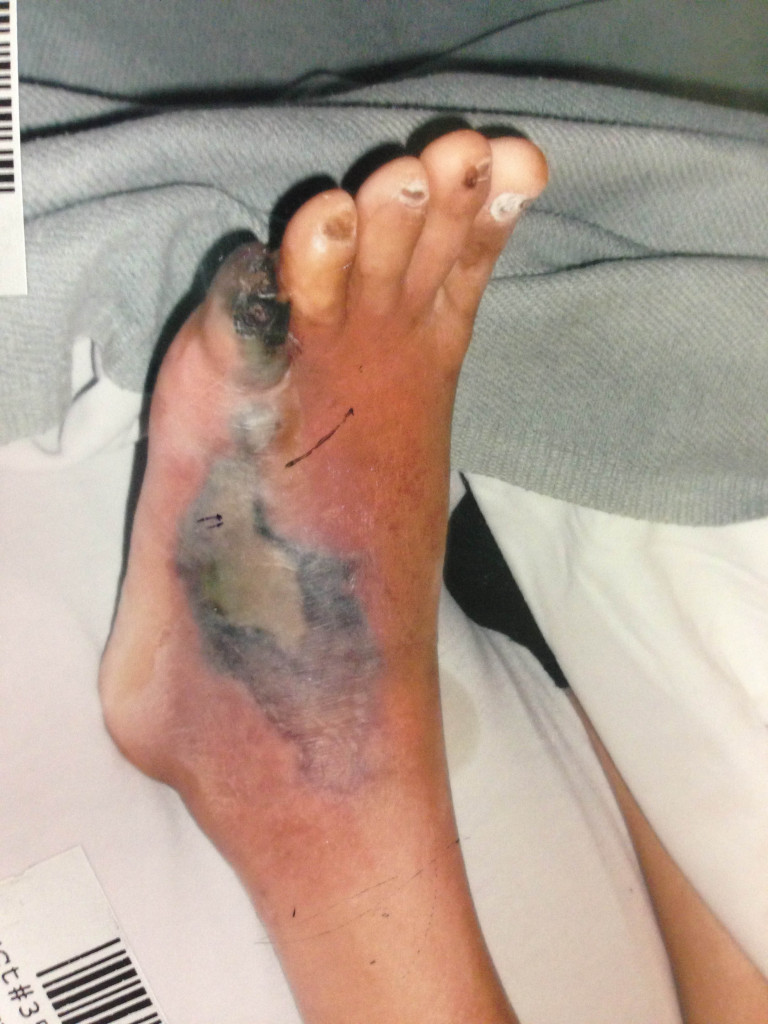This is defined as death of a body’s tissue, usually caused by infective processes or poor blood flow. Uncontrolled diabetes and long-term smoking can lead to critically poor vascularity of our legs and feet, increasing the risk of developing gangrene.
Dry
Dry gangrene develops in tissue where blood supply is poor, at times even without signs of infection. The tissue can feel hardened and often without any malodor.

Wet
A moist environment combined with inadequate blood supply can lead to wet gangrene. The characteristic black discoloration of the tissue can be accompanied with a foul smell and discharge from the wound base, which are signs of an infectious process.

Gas
Gas gangrene is a severe bacterial soft-tissue infection that can lead to tissue / muscle death and sepsis. Its namesake is derived from the appearance of subcutaneous gas bubbles, as seen on radiographs of the foot and ankle. Developing gas gangrene does not occur with simple exposure of a wound to bacteria. There must be enough dead or devitalized tissue in order for anaerobic metabolism to occur. Certain bacteria can release dangerous toxins in our body, which can quickly lead to severe complications, including renal failure, cardiac depression, shock, and death, if left untreated. Considering this and because of its ability to quickly spread to adjacent tissues, gas gangrene is considered a medical emergency.
If you would like to learn more, please watch this video about Gas Ulcers:
Here are a few examples:







